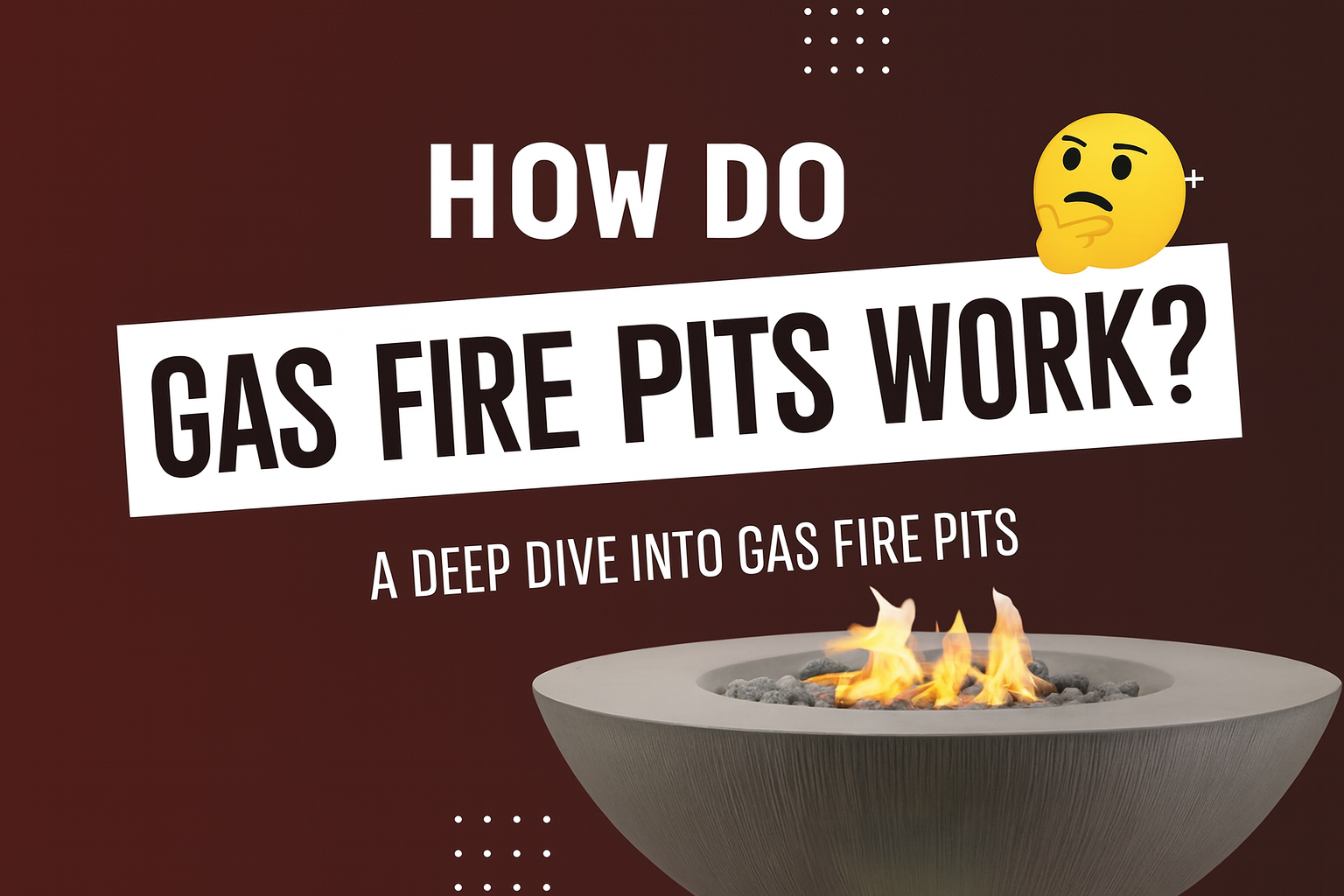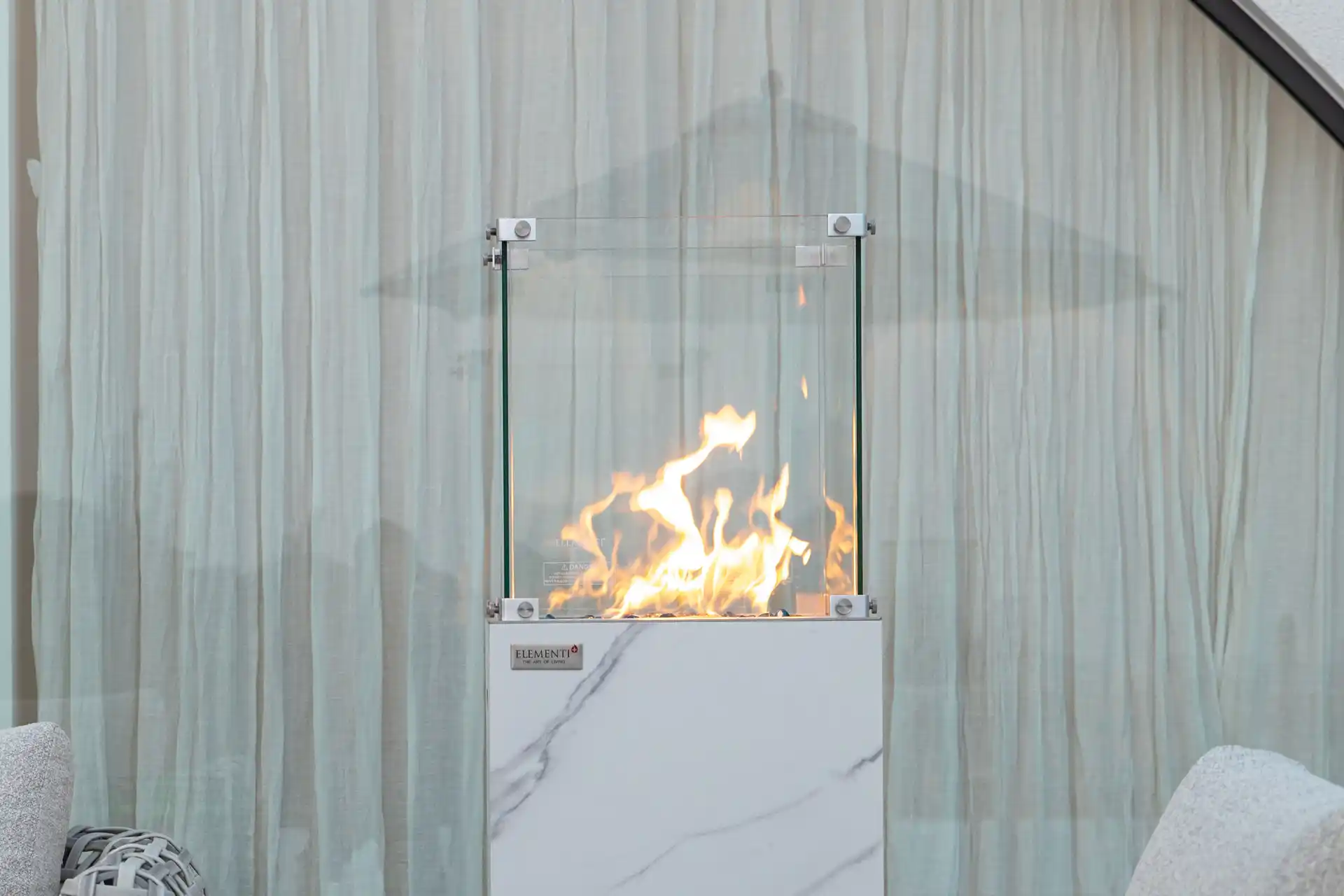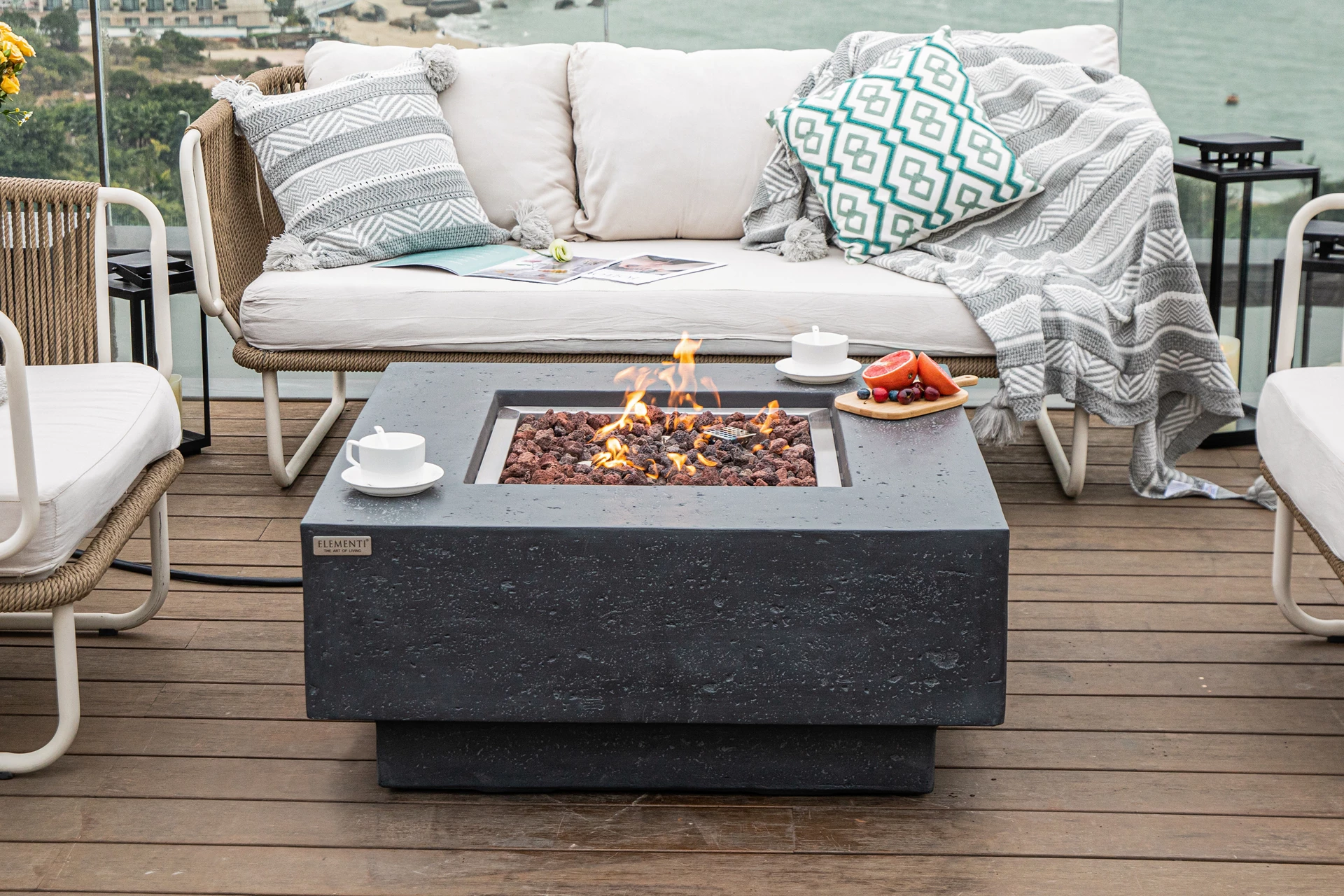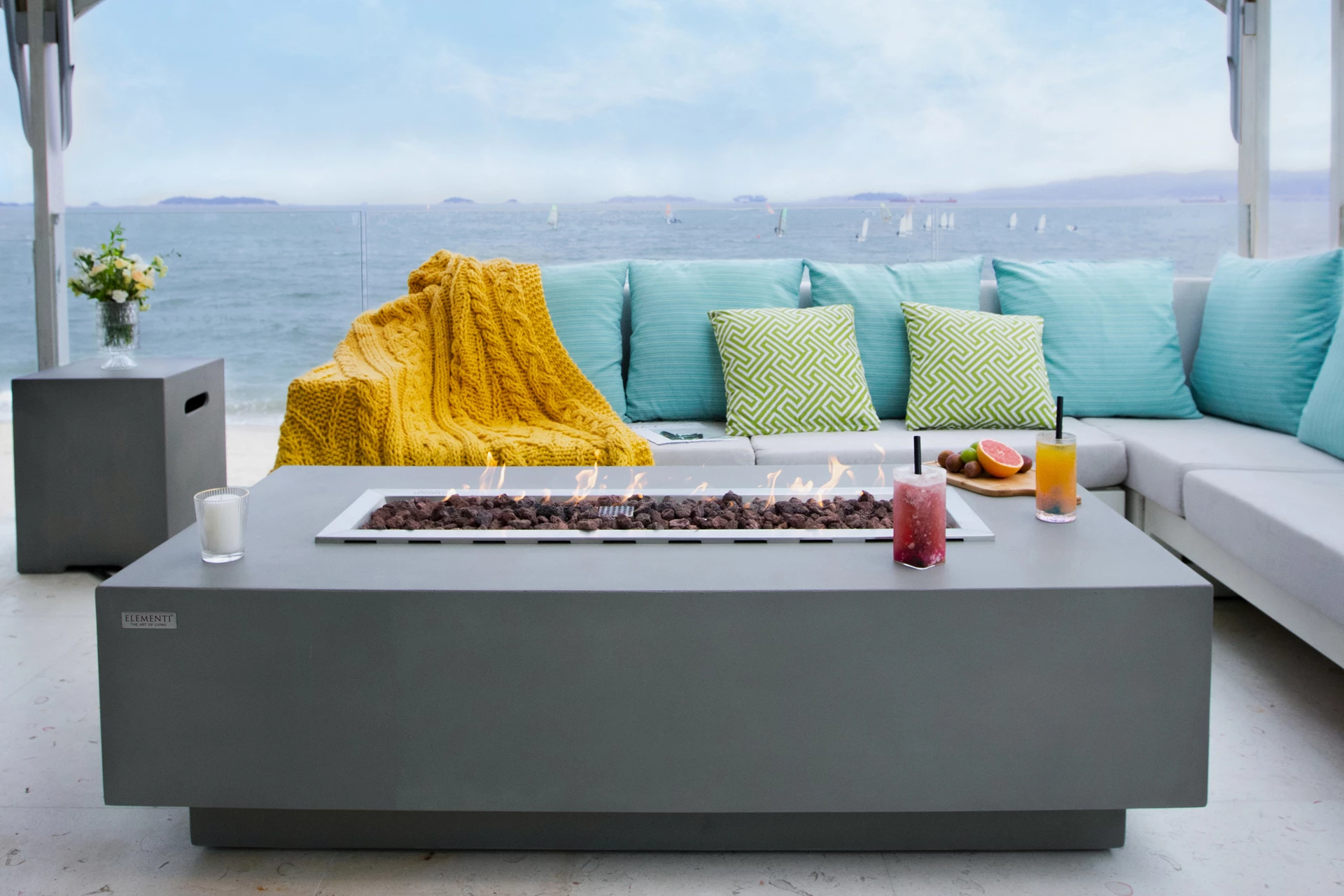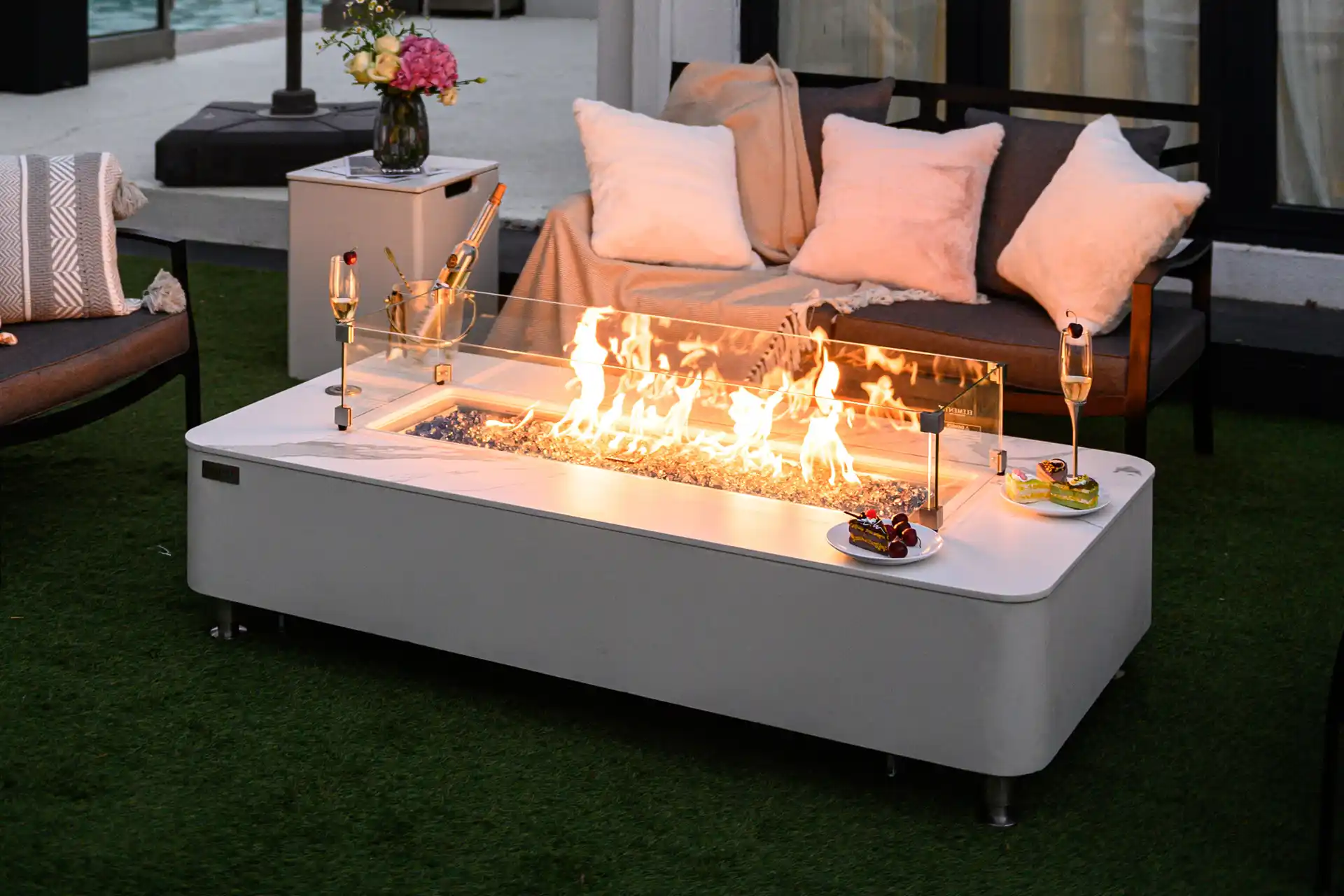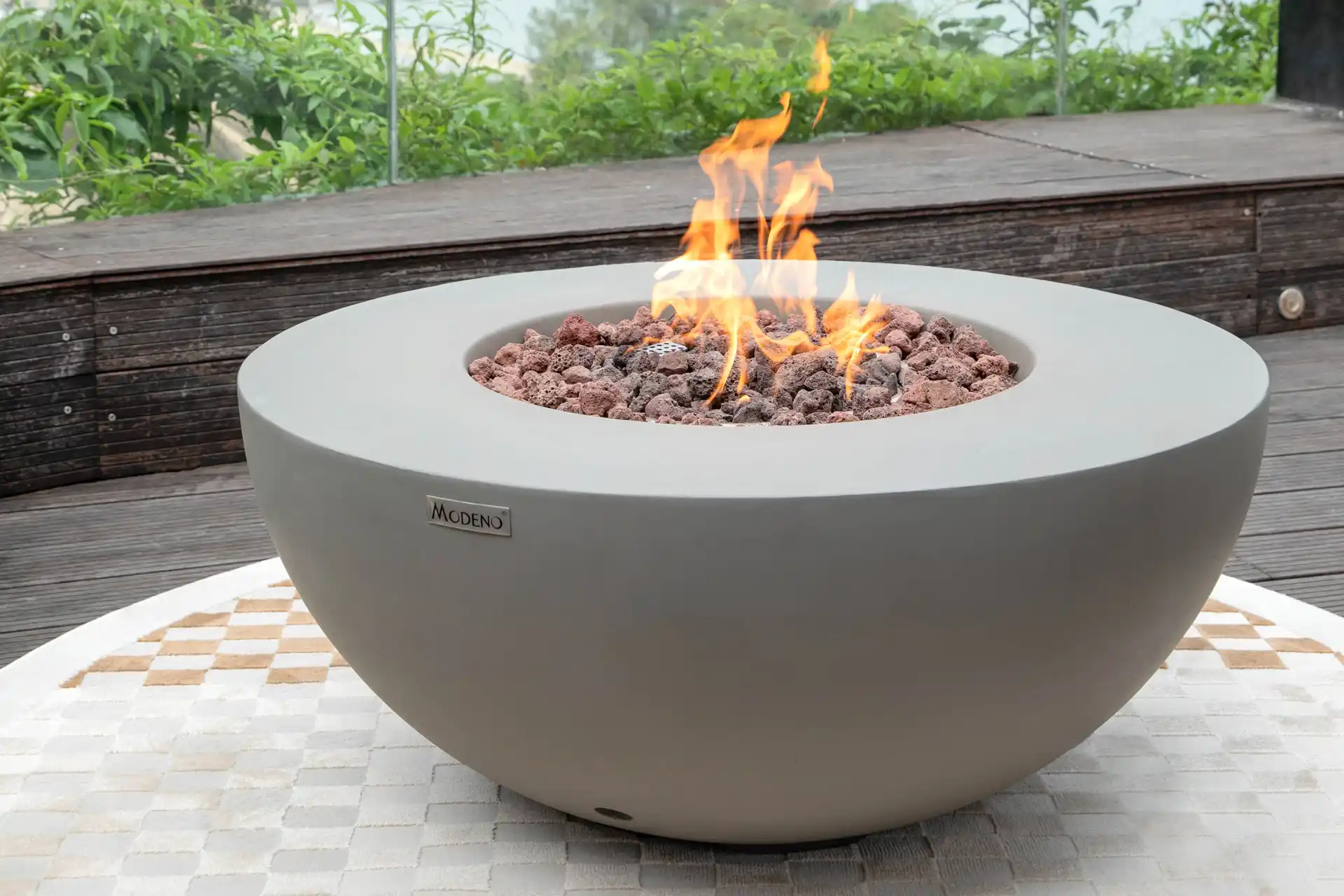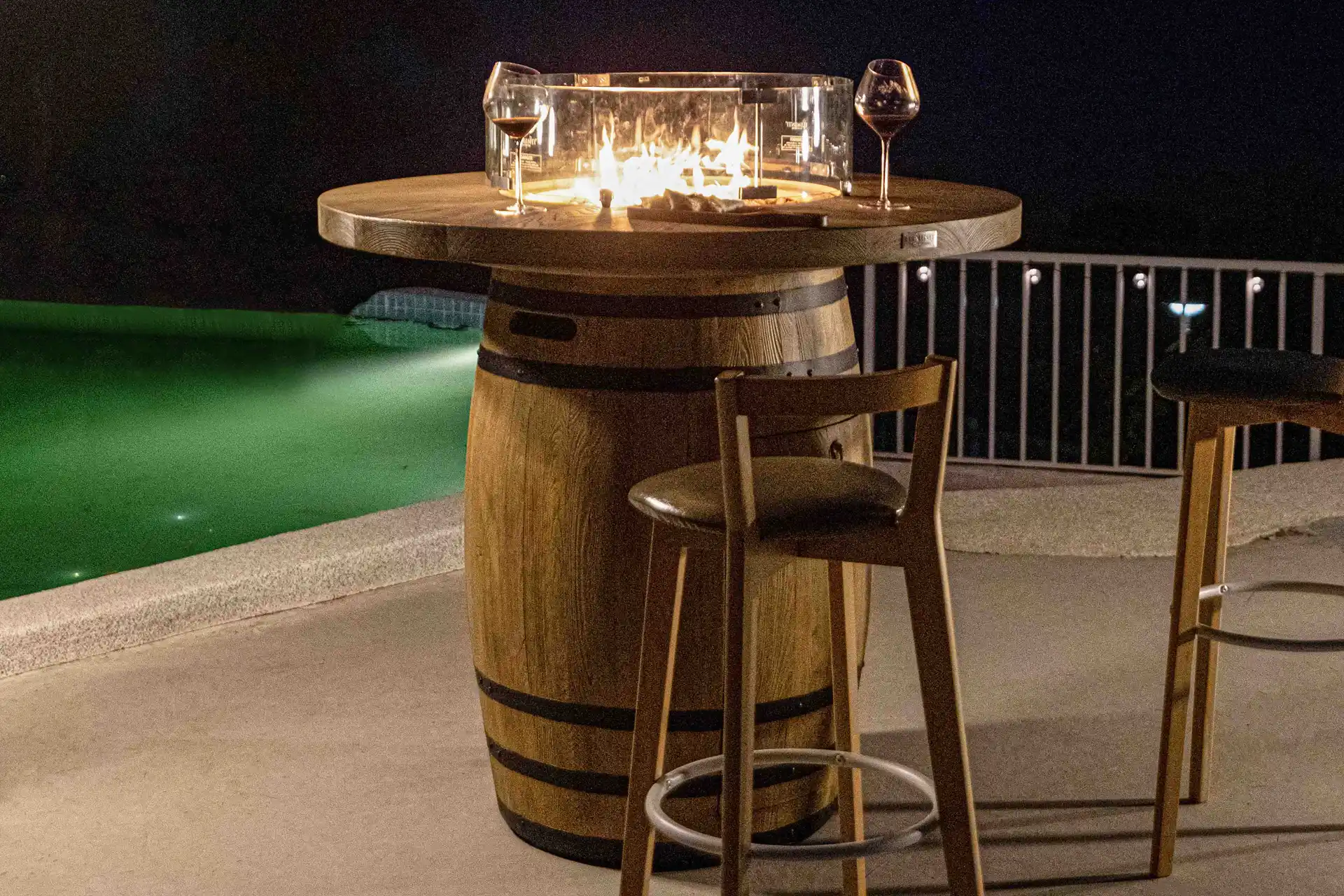The practical guide for patio & garden – with safety tips and product examples.
1 Why gas fireplaces?
Gas fireplaces combine atmospheric flames with maximum ease of use: on at the touch of a button, clean, smoke-free and precisely adjustable. Whether it’s a clear autumn evening or a cool summer night – a gas fireplace quickly becomes the focal point of social gatherings.
2 How does a gas fireplace work?
In the core, gas (propane/natural gas) flows through the burner and is ignited by an ignition system. The flame emerges through openings in the burner and – depending on the design – is visually supported by glass stones, lava stones or ceramic logs.
2.1 Main components
- Burner & tray: Shape and hole pattern influence flame pattern and intensity.
- Ignition: manual, push-button or electronic (with safety cut-out).
- Gas supply: Propane cylinder or natural gas pipe.
- Media: glass/lava/ceramic – protect the burner and shape the appearance.
Tip: Brief overview of fuels here: Propane vs. natural gas.
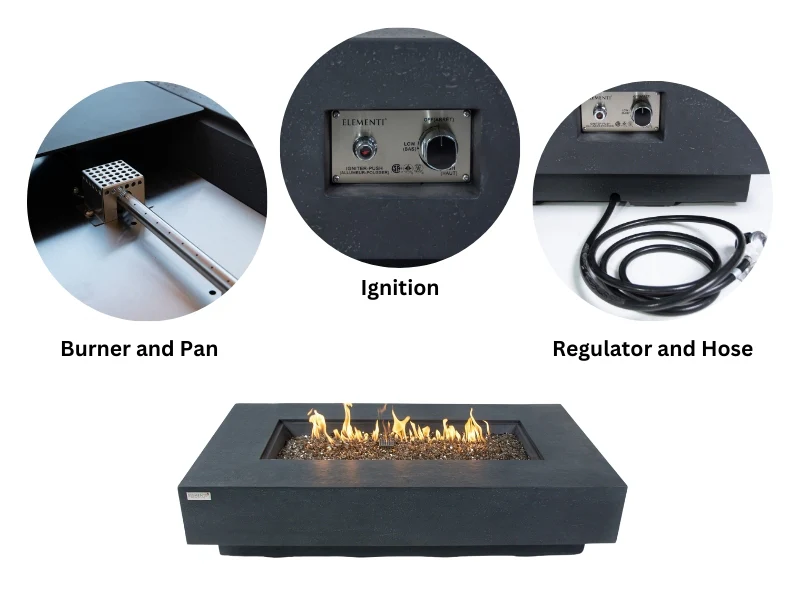
3 Types & use
- Built-in fireplace: permanent solution, usually natural gas; blends seamlessly into hardscape.
- Freestanding fire table: designer piece of furniture with table function; ideal for lounge/dining.
- Fire bowl (gas): classic campfire feeling without the smoke.
- Gas fire pit: free-standing model with integrated gas bottle compartment – flexible positioning for patio or garden, safe and aesthetically pleasing.
4 Advantages over wood fireplaces
| Aspect | Gas fireplace | Wood fireplace |
|---|---|---|
| Start/operation | Immediate, adjustable | Lighting/refilling |
| Smoke/ash | Smoke-free, no ash | Smoke, soot, ash |
| Wind sensitivity | Good usability with wind protection | Flying sparks possible |
| safety | Flame control, switch-off | Observe spark/glow |
| Neighborhood | Low odor | Odor/particles |
More details in comparison: Gas vs. wood-burning fireplace.
5 Installation & Security
- Select location: Observe rules; distance to facades/overhangs (gas usually 1.5-3 m).
- Substrate: non-combustible and level, e.g. Beton, slabs, stone.
- Install burner: flat/solid; insert media according to instructions.
- Connect the gas: Install pipes/regulator by a specialist company; check for leaks with soapy water.
- Wind protection/ventilation: Glass wind shield if required; ventilate base well.
Safety first: Never leave fire unattended, keep children/pets away, have suitable extinguishing protection ready. Always use heat protection on wood/WPC.
6 The right choice: Size, material & BTU
6.1 Size & seat pitch
Size: Select in proportion to the surface area. Too large increases heat build-up/material stress, too small provides too little heat. The fire bowl size guide provides orientation.
Seat spacing: For gas usually approx. 100-150 cm (round: 120-160 cm) comfortable – depending on power and wind.
6.2 Material
- Metal: light/mobile; high heat conduction – only with heat protection mat.
- Stone/brick: very heat-resistant, ideal for installation.
- Beton (GFRC): modern, weatherproof, durable – top for terraces. Material comparison: Beton vs. stainless steel
6.3 BTU & Climate
The output (BTU) determines the heat output. Wind, temperature and installation influence the requirement. Use the BTU guide and the BTU calculator.
7 Care & operation
- Clean burners/openings regularly; place media correctly.
- Check hoses/connections for leaks/cracks; replace in good time.
- Use weather protection; carry out an annual specialist check.
8 Inspiration: Gas fireplaces for patio & garden
8.1 Elementi Yukon
Fireplace with integrated gas bottle compartment – for an elegant, cordless look without visible connections. Made of high-quality sintered ceramic, it offers a sophisticated marble look in white. Particularly heat-resistant, easy to clean and ideal for modern terraces, hotel lounges or outdoor catering areas.
8.2 Elementi Manhattan
Modern, rectangular design made of GFRC concrete in dark gray or light gray – with an elegant travertine look. Clean operation with propane or natural gas; ideal for medium-sized terraces and clear, architectural line layouts.
8.3 Elementi Granville
Made of high-quality GFRC beton, with weatherproof, heat- and rust-resistant properties. Very stable due to its own weight and CSA-certified – perfect for wooden or composite decking.
8.4 Elementi Athens
Large-format fire table with robust GFRC Beton substructure and elegant sintered ceramic top plate. Output approx. 55,000 BTU; dimensions 157 × 100 × 76 cm. Perfect as a central meeting point for spacious lounges or semi-commercial outdoor areas.
8.5 Modeno Roca
Round line, compact and lightweight. Electric ignition, propane/natural gas, approx. 45,000 BTU. Ideal for smaller terraces or balconies – cozy and mobile.
8.6 Elementi Lafite Barrel Bar
Bar and high table in a striking fire barrel/barrel design, made of GFRC concrete with a special wood look. Perfect eye-catcher for bars, restaurant entrances or event areas – combines ambience with function.
9 FAQ: Frequently asked questions about gas fireplaces
Is a gas fire pit safe on wooden or WPC decking?
Yes – with non-combustible substrate/heat protection, adequate ventilation and correct installation. Observe local regulations.
Propane or natural gas – which is better?
Propane is flexible (cylinder), natural gas is convenient in continuous operation. Details: Propane vs. natural gas.
What size makes sense?
Select in proportion to the surface area; for seat spacing and diameter, see Size guide.
10 Conclusion
Gas fireplaces offer comfort, safety and design all in one. With the right size, suitable materials (e.g. GFRC) and professional installation, you can create an atmospheric, clean fire in your outdoor area – all year round.
Discover our gas fireplaces and find the model that suits your space, style and use.









